|
What was the original state of the site? |
The original Workroom is a
long building of "cob" mud wall
construction. It has an open ground floor where
the potters worked and a half boarded roof space with wooden
drying racks where the pottery was stacked prior to
firing. During living memory it has been fronted on
Manor Way by a brick lean-to of single skin construction
with a corrugated iron roof.
After the pottery closed
in 1952 the brick building was used as a shop and the cob
workroom as a store. The Local Authority
declared the lean-to unsafe and so it has been
demolished. It had originally been hoped to use
this area for exhibitions and events but, as it will no
longer be available, a replacement of similar size will need
to be constructed at the rear. This already has
had the advantage of exposing more of the original outer cob
wall to public view.
During its use as a store,
unsightly large steel entrance doors were punched through
one wall and these have now been made good. The
rest of the cob, although apparently in good condition, is
being repaired where necessary. The roof is considered
basically sound. The pottery yard at the rear
had become completely overgrown over the years, obscuring
the rear wall of the building. It has now been
cleared. The interior of the building needed as
little attention as is possible in order to retain its
original atmosphere.
The Trustees are very
grateful to their many supporters in the locality who are
able to see the potential of the building and continue with
their enthusiasm that the project reaches fruition.
Before Refurbishment
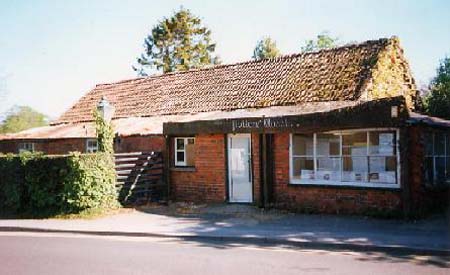
The cob
workshop was contained under the long transverse roof. The
brick lean-to was declared unsafe and had to be
demolished. This has exposed the original cob
exterior wall and Part is now used as a coffee / gift
shop and the rest for displays, outside seating etc.
Manor Way has been closed to traffic with safe pedestrian
access to the open green opposite.
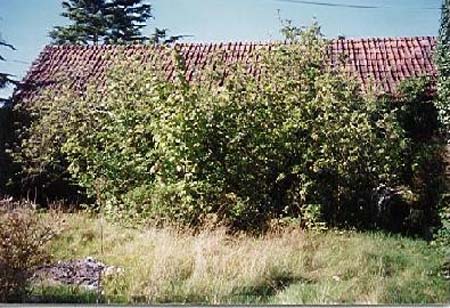
The old
pottery yard was completely overgrown and has been
cleared. This is now the site of the studio and
courtyard. Behind is the new, large, public town car park.
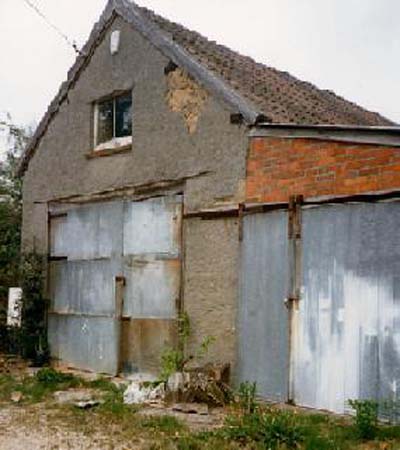
Unsightly
steel doors, punched into the cob, have been filled in and
the brick lean-to on the right has been demolished exposing
the exterior cob.
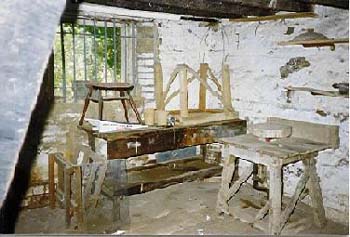
Interior
view of the area in which the master Potter worked.
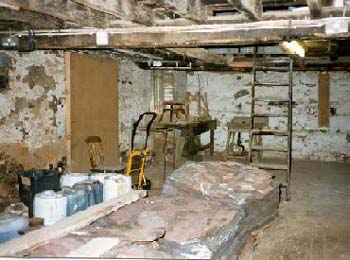
Interior of
the workroom which eas made good and rewired.
The ladder
leads up to the drying floor which is spotlighted and
visible to but not accessible by the public.
THESE PICTURES CANNOT RECREATE THE UNIQUE
ATMOSPHERE OF THE BUILDING.
AGAIN WE GO TO ANDREW MCGARVA WHO COMMENTED ON HIS
VISIT
"THAT HE HAD ONLY EXPERIENCED THE SAME SMOKY,
CHARRED AROMA IN A POTTERY IN BRITTANY"
|